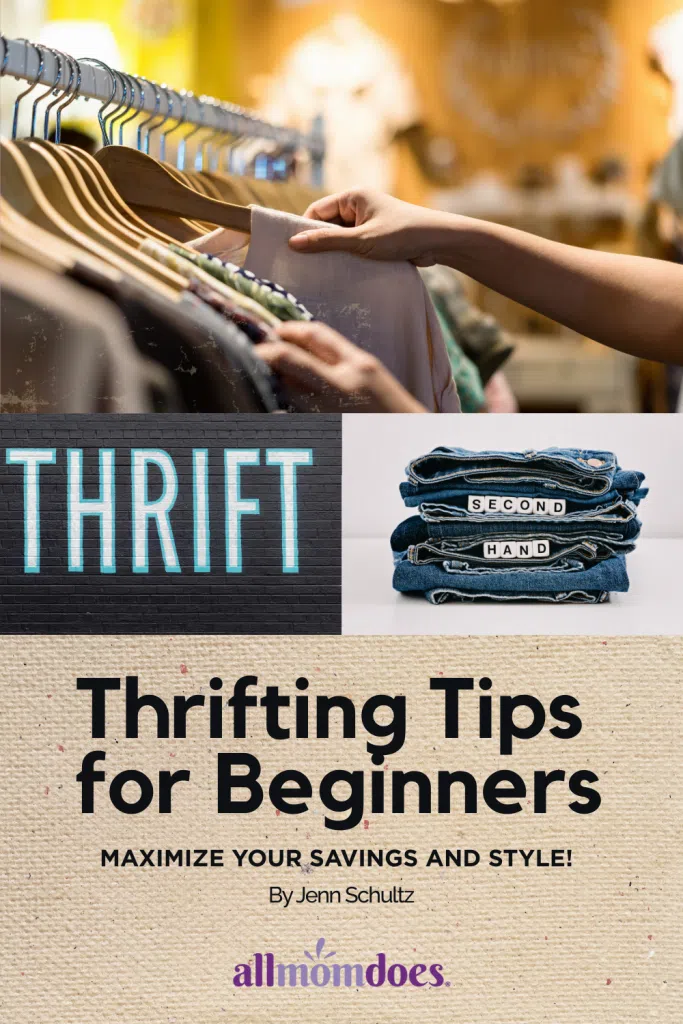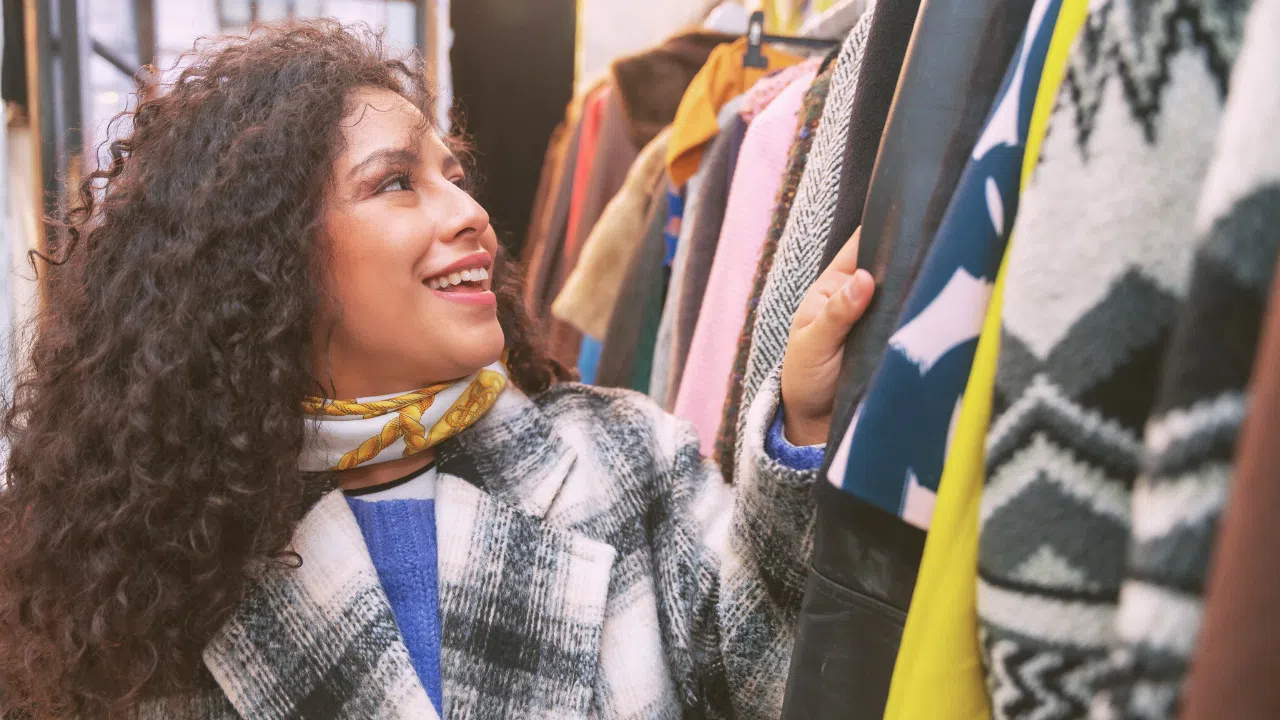My mom’s been taking me to thrift stores since I was little. I can still picture the shop we used to go to, the colorful and multi-textured racks of clothes I would hide in, and the neon-bright tracksuit I begged my mom to buy me in fifth grade. I don’t remember the smell of the store, but that musty laundry detergent scent is about the same everywhere you go, and even now it takes me back. My mom taught me to thrift young, and the habit has stuck with me.
As someone who hates to pay full price for anything, my preferred method of shopping has mostly been secondhand. Maybe I’ve never quite grown up from that wide-eyed girl in the thrift shop (minus the hiding in the racks part), but I love the treasure hunt of it all–something that’s just the right style and fit. Bonus points if it’s something I couldn’t have afforded brand new. Triple bonus points for quality like-new kids clothing, because we all know how fast children’s clothes are outgrown and worn out.
These days, shopping secondhand means taking charge of our budget and shopping according to my values–shopping locally, helping the environment, finding better quality at more reasonable prices, and not handing over more money to fast fashion or overly-paid CEOs. It also encourages me to be mindful and patient when I shop and browse.
Are you a beginner thrifter? Looking for tips on how to spot the best clothing finds? Here are some pointers from a self-declared expert thrifter:
1. Get your timing right.
Thrift shopping on the weekends usually means dodging a ton of people as you make your way around the store, as well as more picked-over racks. My favorite times to go are early in the week, around the time the store opens. Most stores put out new items daily, but some have specific days for new items or sales, so that might also help you figure out your schedule.
2. Stick to your list.
Pull together some inspiration on clothes you want to find. (I like to use Pinterest boards.) Maybe you have a certain uniform, or a capsule closet. You might know which colors work best on you, and you stick with those shades. You may also prefer certain brands or fabrics. Keep a list of items you’d like to work into your wardrobe, and look for those.
3. Don’t be too dazzled by the prices or labels.
Make sure you give every item a quick but thorough inspection for holes, tears, pilling, or discoloration. Not that these have to be deal-breakers–but if you know you’re not usually inclined to sew, and you get an item with the vague intention of mending it someday, you might want to skip it instead of adding something to your closet floor that you forget about. Also, try it on before you buy it, if you can.
4. Speaking of sizes, don’t focus too much on numbers.
Try things on. Sizes vary widely between brands and they have changed over the years. It’s totally possible that even if something isn’t labeled as your size, it could still fit well.
5. Get out of your usual section.
Don’t stick to one part of the store. People abandon perfectly good items all the time in the wrong section, or items can be mislabeled. Check the ends of the rows or on racks outside dressing rooms for decent clothes someone opted to leave behind. Also, keep an eye out for racks of new clothes that have yet to be put on the rack–usually there’s plenty of treasures to find there too.
6. Feel the fabrics.
Sometimes you can tell right away when an item is cheap quality (and even priced more than you would spend to buy it new). Quality fabrics will often be a bit of a heavier weight or thicker texture. Check care tags, most often either on the back of the collar or bottom side seam. Natural fabrics are usually better quality: cotton, linen, silk, or a blend. This tip helped me find a top brand pair of jogger pants lately that were mislabeled and ended up being a lower price.
7. Take your time.
It’s better to go when you have more than five minutes, unless you know exactly what you’re looking for and where to find it (like a white t-shirt, for example). Go through the racks one by one, item by item, or again, if you know the colors or patterns you gravitate towards, look through just items of clothing that meet those descriptions. For instance, I like linen tops in neutral shades, so I usually check the blouse section and stick to colors I know I wear.)
8. Shop online.
It’s a little riskier, depending on the return policy and if you actually will take the time to make a return (let’s be honest). Some of the best places I know are ThredUp, Poshmark, and Mercari, although you can search “secondhand shopping online” for more options. Save searches for the items on your wish list. Use discount codes where you can. Make sure you check measurements before you buy. Look through every picture and ask questions directly to the seller if you have them and are able to do so.
Thrift shopping can be so fun and rewarding. It takes a bit longer, and sometimes you leave empty-handed, but that tends to be a good practice for me, when it’s so easy and accessible to buy something cheaply and questionably made instead.
Cheering you on as you take the leap into thrifting (or thrifting better). Tag me when you score something amazing!
PIN THIS!

 Read more of Jenn’s contributions to AllMomDoes here.
Read more of Jenn’s contributions to AllMomDoes here.

















